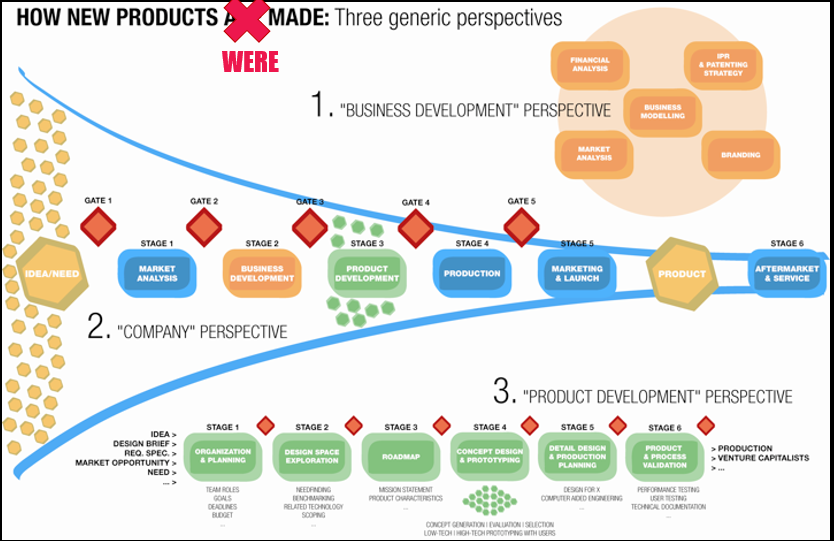|
|
Module 1: The Open Innovation principle and Open Innovation process for agro-industry and bioeconomy. |
|
|
Bahar Bahramian Dehkordi, Nikhil Phadnis |
|
|
Open Innovation has become a new paradigm for organizing innovation and driving profitability not only in several mainstream industries like consumer products, automotive, or services but also the minorities such as bioeconomy, fish and organic farming etc. Module one familiarizes an individual with the world of Open Innovation, its history, and why the world jumped on the trend of OI investing in Open Innovation activities. The module provides comprehensive information on the bio-economy and agricultural industry, showcasing the impact that Open Innovation has had on it. Additionally, the module dives deeper into the principles of Open Innovation, its potential use cases, and relevant contextual case studies. This module provides SME managers with the basics of Open Innovation concepts and illustrates them in the form of case studies to signify their importance in a world of uncertainty. |
|
Upon completing this module, you should be able to: |
|
2. What was it like before Open Innovation?
For many years, firms conducted their development processes solely using internal resources, based on a concept called closed innovation. In this model, companies are viewed as an integrated system that relies heavily on the internal R&D department in order to carry out innovation activities. Therefore, the company follows its own production and marketing procedures as a separate entity [9]. Figure 4 illustrates the closed innovation model, wherein all of the innovation activities happen in a controlled and constrained environment within the boundaries of the organization. This is how products were made until the 2000s, wherein companies used the virtuous cycle of innovation companies invested in fundamental technological breakthroughs, that resulted in new products and features. These products are expected to create sales and profits via the existing business model, and the revenue generated from these products leads to increased investment in R&D. This cycle continues in an endless loop. However, in a competitive dynamic world, the cycle needs to be broken if a company wishes to achieve growth in the shortest possible time [10].
Although it is possible to gain benefits from closed innovation when the company’s internal R&D resources are as such that they can guarantee the continuous development of new technologies, products, and services, if this strategy fails, it is more convenient to create a network that includes external actors such as research institutes, academia, start-ups and stakeholders [11].

Figure 4. Traditional Closed innovation processes (Source: https://www.tobiasclarsson.com/wp-content/uploads/pdp.png)
Table 1 below presents the closed innovation process and some of its concepts. In fact, most small and medium-scale enterprises and family-owned businesses still follow the traditional closed processes. While the traditional processes are evidently successful, they have reached a theoretical limit to which they can be exploited. Moreover, closed innovation processes have also evidently been known to kill great ideas and innovations that could potentially have accelerated the growth of the company. The second column in the table also presents problems of closed innovation processes.
Table 1. Closed innovation and its problems
| Closed/Traditional Innovation processes |
|---|
| Hire all the smartest people in our industry |
| Invest heavily in your R&D to discover and develop new products and services to bring to market |
| First Mover Advantage is key to winning at markets - and it is dictated by R&D |
| Scale and scope advantages in R&D ensure that highest investments bring the most and the best ideas - that in turn bring market leadership |
| IP is the cost you pay to defend your knowledge and keep it from competitors |
| Problems of Closed Innovation |
| No room for individual inventor-entrepreneurs |
| R&D tightly coupled and internally focused, technology can be planned and predicted |
| IP role as defensive assets (prevent spill overs) |
| Accumulation of unused stocks of knowledge assets |
| Universities distanced from business life |
(Chesbrough, 2003)
To summarise, close innovation processes limit a company’s potential to exploit all of its assets, rely solely on its internal expertise and knowledge for commercializing products and failed to predict the threats by competitors and start-ups in the long term. Research also shows that several successful multinational corporations that followed the closed tradition and innovation processes failed miserably, as leadership and management resisted the change.
Nowadays, closed innovation methods are no longer relevant due to educational developments, globalization, shorter product life cycles, and more competitive markets.
The spread of innovation in networks has been a popular research topic in the last two decades. It has been extensively explored how the size of a company can impact its innovation performance and networking. More specifically, numerous studies have identified significant advantages and disadvantages for SMEs when it comes to enhancing innovation. The findings indicate that smaller sizes can have a positive effect on aspects like communication, flexibility, and the capability of employees, ultimately leading to more efficient and effective innovation enhancement. However, SMEs face many obstacles to innovation, including a lack of financial resources, lower management and marketing capabilities, and difficulties in complying with government regulations[12].
Open Innovation was the inevitable result of the changing business environment [13].
Quiz:
Closed innovation strategies are enough to be successful in today’s competitive market. (True/False)
What is not considered to be a closed innovation problem?
- No room for individual inventor-entrepreneurs
- It limits a company’s potential to exploit all of its assets
- Wide collaboration with universities
- IP role as defensive assets